#Royal Horticultural Society Victoria
Explore tagged Tumblr posts
Text
youtube
Jane visits an incredible centenarian whose life-long love of gardening keeps her active at home and in the community.
Jane visits Nance Esmore, a truly remarkable woman who recently celebrated her 101st birthday. Over the years she's gathered a lifetime's worth of plant knowledge, and with help, she independently lives in the same house and garden that she's looked after for over 50 years. Her vast collection includes award-winning orchids, bromeliads, bulbs, succulents, cyclamen, rhipsalis and tillandsias.
One of Nance's larger specimens is a tillandsia, estimated to be 35 years old. It is growing in a pipe drilled with holes by her husband. Another, over 20 years old, was sewn onto a little wire basket. Tillandsias generally prefer warm climates so the fact that Nance has so many mature specimens growing outdoors in Melbourne is no mean feat. For tips on tillandsia care, Nance says, "in the summer I just give them a sprinkle with the hose… every now and then I get a styrofoam box without holes, and I fill it with a weak solution and dunk them in, sometimes for half a day… They like east facing, they don't like west sun because it does burn them. Sometimes when we have a very hot day, I will throw a piece of old towel over to protect them." When choosing vigorous growers for cooler climates, go for Tillandsia bergeri and Tillandsia 'Cotton Candy'.
Nance's garden is filled with baskets, shade houses and structures made by her husband who was an engineer. Nance says he made "everything. All the hooks, he made so many things. Hangers, if you see a hanger somewhere he made them all." Under the shade of her towering Lophostemen tree is a collection of interesting plants which are decades old, including a rope hoya, the string of dolphins, and a very rare specimen the Ceropegia ampliata named bishops crown for the shape of its flower. Nance says, "I have 76 baskets hanging up in this tree. You wouldn't believe how… I'd put a pebble in the toe of a panty hose, and I would throw it over a limb, and I'd think, I can hang a basket there." Always having a flare for unusual plants Nance's involvement in the Melbourne plant scene really took off when she retired from work and joined several gardening clubs over 40 years ago. "You're never too old to learn and you learn so much from going to the garden clubs," says Nance who has made life-long friends through this connection. "You meet a lot of lovely people; I think gardeners are friendly people."
Upstairs Nance has a collection of ribbons, medals and awards from competitive garden shows including her enormous award-winning cataleya orchid, completely covered in textbook pink blooms. The most prestigious medal awarded to Nance is from the Royal Horticultural Society Victoria; the John Pascoe Fawkner medal. Jane recognises this as the highest in horticulture. Nance says, "I always wanted to be around the garden. I had a patch from when I was about five or six. You come out into the garden you forget everything. It's a therapy, I feel it's a therapy." And although she is now legally blind, Nance is in the garden every day. Nance says, "I can't see it much, but I just come down and potter around and look at this and look at that. It's really healthy for you."
Through her years of wisdom, Nance offers this advice to new gardeners starting out; "If they've got a small balcony, just a few pots, that's how I started out. And you know what, it just grows on you." Nance generously offers Jane a cutting from her tillandsia and says, "you can put that on a mount… and then you tie (the roots) down, so it holds firm… and that's in memory of my garden." Jane has known Nance several years and will treasure this specimen. Jane says, "I've always been fascinated by plants and by the people who care for them and isn't Nance an absolute legend. Her garden reads like an autobiography of a life very well lived; surrounded by plants, in good health, and doing something that you love."
#gardening australia#solarpunk#australia#Nance Esmore#gardening#horticulture#garden#Melbourne#elder knowledge#Royal Horticultural Society Victoria#John Pascoe Fawkner#John Pascoe Fawkner medal#Gardening wisdom#Youtube
3 notes
·
View notes
Text
The Nondescript Award Winner

Polyscias guilfoylei ‘victoriae’, sometimes known as ‘False Coffee’, sprouting up in a more remote part of the botanic gardens. Photo credit: Jonathan Chua.
This cultivar is apparently a recipient of the Royal Horticultural Society’s Award of Garden Merit.
#photographers on tumblr#false coffee#flora fauna#flora photography#fujifilm photography#fujifilm x-s1#Polyscias guilfoylei 'victoriae'
15 notes
·
View notes
Text

Ellen Ann Willmott FLS VMH (19 August 1858 – 27 September 1934) was an English horticulturist. She was an influential member of the Royal Horticultural Society, and a recipient of the first Victoria Medal of Honour, awarded to British horticulturists living in the UK by the society, in 1897. Willmott was said to have cultivated more than 100,000 species and cultivars of plants and sponsored expeditions to discover new species. Inherited wealth allowed Willmott to buy large gardens in France and Italy to add to the garden at her home, Warley Place in Essex. More than 60 plants have been named after her or her home, Warley Place.
7 notes
·
View notes
Text
Ellen Willmott

Ellen Willmott was born in 1858 in Heston, Middlesex. In her garden at Warley Place, Willmott grew more than 100,000 species of shrubs, trees, and plants. In 1897, Wilmott received the Victoria Medal of Honour from the Royal Horticultural Society, one of only two women to receive the award that year. There are several species of plants named after Wilmott.
Ellen Willmott died in 1934 at the age of 76.
18 notes
·
View notes
Text

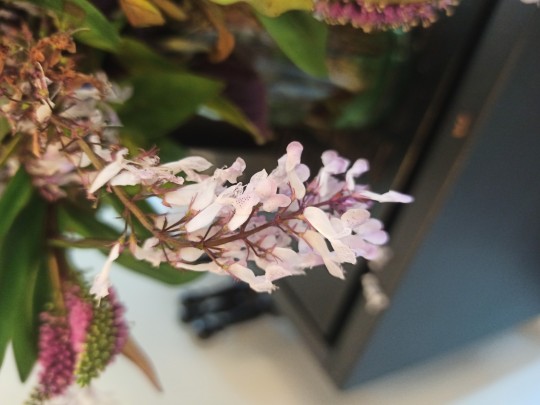
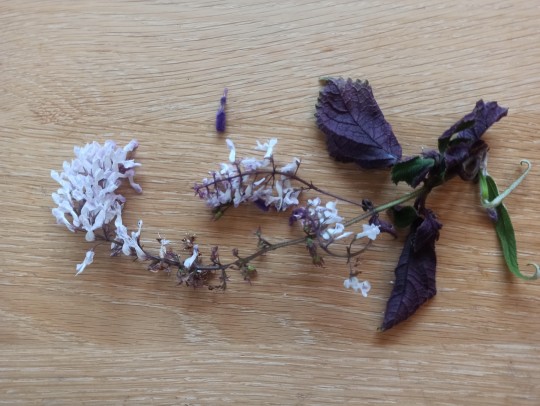

Plectranthus ciliatus, called Indian borage, speckled spur flower, blue spur flower (a name shared with other members of its genus), and candlestick plant (shared with many other species), is a species of flowering plant in the family Lamiaceae. It is native to South Africa and Eswatini, and introduced to Victoria in Australia and the North and South Islands of New Zealand. With its Coleus‑like foliage, its cultivar 'Easy Gold' has gained the Royal Horticultural Society's Award of Garden Merit as an ornamental.
Clade:Asterids
Order:Lamiales
Family:Lamiaceae
Genus:Plectranthus
plectranthus: From the Greek plektron (spur) and anthos (flower), referring to the spurred flowers. The specific epithet ciliatus comes from the Latin word cilia , meaning fine hairs, and refers to the characteristic hairs on the leaf margins giving the appearance of eyelashes, hence the vernacular name eyelash spur-flower.
Plectranthus ciliatus is used for personal hygiene, to wash clothing and garments made out of sheepskin or animal skins.
Listed on the NZ National Pest Plant Accord.
Как по мне, отчётливо пахнет коноплёй, хотя никаких упоминаний об этом не встречаю. Надо попробовать покурить.
25 Rimutaka Place, Titirangi, Auckland 0604
3J4P+86P Auckland
-36.9441560, 174.6355810
наземные растения цветы цветковые травы
0 notes
Text
Barrie's Garden Centre
Barrie’s Garden Centre is small enough to care but large enough to satisfy. We build our business one customer at a time. Our goal is to have complete customer satisfaction.
We pride ourselves on bringing in an ever changing variety of plants, trees, home and garden décor and water pond features that will make you the pride of the neighbourhood. We keep up with the latest gardening trends to bring you a visual feast of the latest products, which are hand picked by our gardening experts. We are so VERY proud of our team of experts and they are dedicated to helping you love everything about your garden.
Barrie’s Garden Centre 15th year anniversary
Quality
At Barrie Garden Centre we believe quality is the root to successful gardening. We want our ustomers to be successful gardeners and have gardens they can be proud of. We will only be as successful as our customers.
So often we receive comments from customers that reinforce our position of offering the highest quality.
I’ve never had annuals that have grown so well.
It’s September and the flowers I bought from you in May still look beautiful.
Buying plants is much like buying food. Buy the healthiest, freshest looking plant – even if this cost a few extra pennies. You won’t be throwing your money out in the composter latter on.
It’s only that we believe in our quality that we offer an industry leading 5-year warranty.
Variety & Selection
Gardeners from across Ontario come to Barrie Garden Centre to find plant material that is unique and usual. Our specialty is hard to find and rare perennials. Whether you’re a collector or a novice gardener we are sure to amaze you with our selection and variety. With over 1000 varieties of perennials, 100’s of varieties of annuals, and 150 varieties of clematis if we don’t have it we’ll get it for you.
Here is a sample of the more unusual and hard to find plants you will find at Barrie Garden Centre.
Gardening Knowledge
We are the “Gardening Specialists”. It does not matter whether you’re a novice gardener or seasoned gardener we’re here to help. With certified horticulturist on staff and combined 75 years of experience we are confident we will have the answer to your gardening question.
We pride ourselves with having specialists in every area of gardening:
Perennials & Annuals
Nursery
Pond/Water Gardening
Plant Health
Garden Design & Installation
Container Gardening
We also have leading edge technology we can refer to, to identify and solve the most troublesome and persistent pest and fungi problems.
Each year every Barrie Garden Centre key staff spends 25 hours in training enhancing their product and plant knowledge. It is because of our commitment to having the best staff we frequently receive comments from customers.
Support Your Community
The Barrie Garden Centre philosophy is Support your Community and the community will support you.
Barrie Garden Centre is a proud sponsor and supporter for a number of community initiatives.
Communities in Bloom – Barrie
Arboretum
Barrie Garden Club
Master Gardeners
Horticultural Societies (Elmvale, Midland, Oro, Painswick)
McLaren Art Centre
Theatre By the Bay
Humane Society
Lung Association
Rotary Club of Barrie
Royal Victoria Hospital
Local Schools
Boy Scout Clubs
Contact
Business Name: Barrie's Garden Centre
Address: 375 Bayview Dr, Barrie, ON L4N 8Y2
Phone: +17057301113
Owner Name: Beth Leonienco-Burke
Email: [email protected]
Website: https://barriegardencentre.com/
Facebook: https://www.facebook.com/BarriesGardenCentre/
Twitter: https://twitter.com/Barries_GC
Linkedin: https://www.linkedin.com/in/barries-garden-centre/
Google Maps: https://www.google.com/maps?cid=620982841668599948
0 notes
Text

100 Photos of Queen Elizabeth II: {31/100}
Queen Elizabeth II presents Prince Charles with the Royal Horticultural Society's Victoria Medal of Honour during a visit to the Chelsea Flower Show on May, 2009 in London.
6 notes
·
View notes
Photo








Flora and Sylva
Today we present illustrations from Volume One of the revised edition of Paxton’s Flower Garden by John Lindley and Sir Joseph Paxton, revised by Thomas Baines and published by Cassell, Petter, Galpin & Co. in London in 1882. The color illustrations we are featuring today are by Walter Hood Fitch, a prolific botanical illustrator who also produced chromolithographs for Curtis’s Botanical Magazine.
Paxton’s Flower Garden was issued in monthly parts from 1882-1884, which became three volumes. It was written by two eminent British botanists. John Lindley (1799-1865) is considered by many as the “father of orchidology.” In his early years he served as an assistant to Sir Joseph Banks in his library and herbarium, and later was appointed assistant secretary to the Royal Horticultural Society. He was also elected Fellow of the Royal Society of London and in 1829 he was appointed professor of botany in the newly founded University of London. Sir Joseph Paxton (1803-1865) was a British gardener, designer, writer, Member of Parliament, and creator of one of most famous buildings of Victoria’s reign, The Crystal Palace, a cast-iron and glass structure originally built in Hyde Park, London, to house the Great Exhibition of 1851.
The preface states the original purpose of Paxton’s Flower Garden was “To supply, in monthly parts, as full an account of all the new and remarkable plants introduced into cultivation as is necessary to the horticulturist; the history of such plants being sought in botanical works published on the continent; to which English cultivators have little access, as well as in those of our own country, and in the gardens or herbaria from which they are derived.”
View more posts from Paxton’s Flower Garden.
View more posts from our Flora and Sylva series.
–Sarah, Special Collections Graduate Intern
#Flora and Sylva#Paxton’s Flower Garden#John Lindley#Sir Joseph Paxton#Thomas Baines#Cassell Petter Galpin & Co.#Walter Hood Fitch#floral illustration#botanical illustration#botanical art#Yay chromoliths!#chromolithographs#chromolithography#flower illustrations#floral art#Sarah Finn#sarah
62 notes
·
View notes
Photo




The Wales grandchildren on their first engagements
Prince George of Cambridge enjoying a playdate with a Plunket playgroup at Wellington’s Government House, New Zealand, during the Cambridge’s Tour of New Zealand in 2014
Princess Charlotte of Cambridge enjoying a children’s garden party in the grounds of Victoria’s Government House, Canada, alongside her parents and elder brother, during the Cambridge’s Tour of Canada in 2016
Prince Louis of Cambridge visiting his mama’s ‘Back to Nature’ garden at the Royal Horticultural Society’s Chelsea Flower Show, England, alongside his parents, elder brother, and elder sister in 2019
Master Archie Mountbatten-Windsor meeting Archbishop Desmond Tutu at the Archbishop’s Legacy Foundation, in Cape Town, South Africa, during the Sussexes Tour of South Africa in 2019
350 notes
·
View notes
Link
Spring in traditional Irish culture starts on the 1st of February which is Saint Brigid's Day but for weather scientists March, April and May are the spring months.
Ireland is renowned for daffodil breeders, and none more so important than Guy Wilson from County Antrim who was awarded the Royal Horticultural Society's highest award, the Victoria Medal, for his daffodil breeding; particularly for white daffodils - a few of which can be seen in the image of these colourful daffodils growing in the Irish countryside.
#ireland#flowers#vsco#daffodils#saint david's day#spring in ireland#guy wilson daffodils#irish countryside#travel#nature#wildlife
6 notes
·
View notes
Photo

On This Day In Royal History . 6 July 1868 . Princess Victoria was born on 6 July 1868 at Marlborough House, London. . ◼ Her father was Prince Albert Edward, Prince of Wales (later King Edward VII), the eldest son of Queen Victoria & Prince Albert. . ◼ Her mother was Alexandra, Princess of Wales, (née Princess Alexandra of Denmark), the eldest daughter of King Christian IX & Queen Louise of Denmark. . Although she had a number of suitors, the most famous of them being King Carlos I of Portugal, Princess Victoria never married & had no children. Her mother, Alexandra, is believed to have actively discouraged her from marrying. Instead she remained a companion to her parents, particularly her mother, with whom she lived until Queen Alexandra’s death in 1925. The Princess then set up her own home at Coppins, Iver, in Buckinghamshire. She took a particular interest in the village life, becoming honorary president of the Iver Horticultural Society . . . #Princessvictoria #Otd #ThisDayInHistory #OnThisDayInHistory #royalfamily #royalfamily #royal #royalty #windsorcastle #buckinghampalace #britishroyalfamily #royals #EnglishHistory #Britishhistory #britishroyalty #thecrown #britishroyals #crown #britishmonarchy #history #windsor #RoyalHistory #HistoryFacts #British #London #Historic #historyblogger #historyinpictures (at London, United Kingdom) https://www.instagram.com/p/CCUJ26NDWj_/?igshid=4umgiayqetd3
#princessvictoria#otd#thisdayinhistory#onthisdayinhistory#royalfamily#royal#royalty#windsorcastle#buckinghampalace#britishroyalfamily#royals#englishhistory#britishhistory#britishroyalty#thecrown#britishroyals#crown#britishmonarchy#history#windsor#royalhistory#historyfacts#british#london#historic#historyblogger#historyinpictures
1 note
·
View note
Photo

𝐹𝓊𝓁𝓁 𝒩𝒶𝓂𝑒
Catherine “Kate” Elizabeth (née Middleton)
────── ღೋ 👑 ღೋ ──────
𝐹𝓊𝓁𝓁 𝒯𝒾𝓉𝓁𝑒
Her Royal Highness Catherine The Princess of Wales, The Duchess of Cornwall, The Countess of Chester, & The Duchess of Rothesay
────── ღೋ 👑 ღೋ ──────
𝐵𝓸𝓇𝓃
Saturday, January 9th, 1982 in Royal Berkshire Hospital, Reading, England
────── ღೋ 👑 ღೋ ──────
𝒫𝒶𝓇𝑒𝓃𝓉𝓈
Father: Michael Francis Middleton
Mother: Carole Elizabeth (née Goldsmith) Middleton
────── ღೋ 👑 ღೋ ──────
𝒮𝒾𝒷𝓁𝒾𝓃𝑔𝓈
Younger Sister: Philippa “Pippa” Charlotte (née Middleton) Matthews
Younger Brother: James William Middleton
Brother In Law: His Royal Highness Prince Henry (Harry), The Duke of Sussex
Brother In Law: James Matthews
────── ღೋ 👑 ღೋ ──────
𝒩𝒾𝑒𝒸𝑒𝓈 𝒶𝓃𝒹 𝒩𝑒𝓅𝒽𝑒𝓌𝓈
Oldest Nephew: Arthur Michael William Matthews
Oldest Niece: Grace Elizabeth Jane Matthews
Youngest Nephew: Prince Archie of Sussex
Youngest Niece: Princess Lilibett of Sussex
────── ღೋ 👑 ღೋ ──────
𝒮𝓅𝓸𝓊𝓈𝑒
His Royal Highness Prince William of Wales (M. 2011)
────── ღೋ 👑 ღೋ ──────
𝒞𝒽𝒾𝓁𝒹𝓇𝑒𝓃
Oldest Son: His Royal Highness Prince George of Wales
Daughter: Her Royal Highness Princess Charlotte of Wales
Youngest Son: His Royal Highness Prince Louis of Wales
────── ღೋ 👑 ღೋ ──────
𝐸𝒹𝓊𝒸𝒶𝓉𝒾𝓸𝓃:
English - Language Nursery School
St. Andrews School
Downe House School
Marlborough College
University of St. Andrews: Master of Arts in History of Art
British Institute of Florence
────── ღೋ 👑 ღೋ ──────
𝐼𝓃𝓉𝑒𝓇𝑒𝓈𝓉𝓈
Culture
Chilean Culture
Italian Culture
Education:
Biology
Chemistry
History
Museums
Research
Environment:
Gardening
Natural Resources
Protect Vulnerable Environments
Health:
Addiction
Children’s Health
Gynecology
Health Charities
Health Services
Hospices
Hospitals
Mental Health
Obstetricians
Safe Water
Sanitation
People:
Children
Scouts (Children, Teen, & Adult)
The Disadvantaged
Women
Social Issues:
Poverty
Social Isolation
Sports:
Crew
Cricket
Croquet
Field Hockey
High Jump
Hockey
Law Tennis
Netball
Sailing
Support
Tennis
The Arts:
Art Galleries
Catalogue Design & Production
Fashion
Music
Photography
Writing
────── ღೋ 👑 ღೋ ──────
𝒫𝒶𝓉𝓇𝑜𝓃𝒶𝑔𝑒𝓈
Founder Patron:
The Royal Foundation of The Duke & Duchess of Cambridge
Honorary Life Membership:
The Marylebone Cricket Club
Membership:
Tuvalu Order of Merit
Other Work:
Accessory Buyer: Jigsaw
Ambassador: The 2012 Summer Olympics
Co-Designer: The Royal Horticultural Society
Competitor: King’s Cup Yacht Regatta
Contributor: HuffPost UK - Young Minds Matter Movement
Crew Member: The World Challenge Boats
Deck Hand: The Port of Southhampton
Event Coordinator: The Boodles Boxing Ball
Family Business: Catalogue Design & Production, Marketing, & Photography
Fundraiser Organizer: Place2Be
Initiated Heads Together with the Duke of Cambridge & Duke of Sussex
Member: The Lumsden Club
Party Essentials Organizer: Starlight Children's Foundation
Photography Exhibition Curator: UNICEF Fundraiser
Volunteer: Raleigh International & The Royal Voluntary Service
Part Time Waitress
Patron:
100 Women in Hedge Fund's Philanthropic Initiatives
Action for Children
Action on Addiction
All England Lawn Tennis & Croquet Club
Anna Freud National Centre for Children & Families
Evelina London Children’s Hospital
Family Action
NHS Charities Together
Place2Be
SportsAid
The 1851 Trust
The Foundling Museum
The Law Tennis Association
The National History Museum
The National Portrait Gallery
The Royal Photographic Society
The Royal Society of Medicine
The Victoria and Albert Museum
President:
The Scout Association
Royal Patron:
East Anglia’s Children’s Hospices
M-Pact Programme
The Royal College of Obstetricians & Gynecologists
#Catherine Middleton#Kate Middleton#The Duchess of Cambridge#The Countess of Strathearn#The Lady of Carrickfergus#Saturday#January#1980's#Royal Berkshire Hospital#Reading#England#Michael Middleton#Carole Middleton#Pippa Middleton#Pippa Matthews#James Middleton#The Duke of Sussex#James Matthews#Arthur Matthews#Grace Matthews#Prince Harry#Prince William#2011#St. Andrews School#Downe House School#Marlborough College#Prince George of Wales#Princess Charlotte of Wales#Prince Louis of Wales#Prince William of Wales
132 notes
·
View notes
Text
Blooming Bedminster Winter Quiz
Round three
Here are some questions to test your knowledge of 18th and 19th century gardening history.
1. In which country would you find these 18th century gardens: Chateau de Fontainebleau, Palace de Versailles, Vaux-Le-Vicomte and Chateau de Chantilly?
a) France
b) Belgium
c) The Netherlands
d) Luxembourg
2. The Victory Medal of Honour (VMH) is the highest accolade that can be awarded to a person who has made an outstanding contribution to horticulture. How many recipients can hold the tittle at one time?
a) 24
b) 33
c) 64
d) 72
3. The Horticultural Society of London was founded in 1804 in Piccadilly, London. In what year did the society receive a Royal decree from Queen Victoria, creating the new tittle of the Royal Horticultural Society, or RHS?
a) 1819
b) 1833
c) 1856
d) 1861
4. Humphrey Reston would present books to his prospective clients featuring his proposed garden designs. It is thought that he produced over 100 of these books. But what was their iconic colour?
a) Blue
b) Red
c) Green
d) Black
5. Many 19th century plant collectors used a glass case invented in 1829, and named after its inventor, to keep their botanical specimens alive. What was the case called?
a) Brownian
b) Smithian
c) Wardian
d) Gregian
6. Capability Brown is possibly the most influential garden designer of all time. He is also famous for another gardening feat in 1768. What was it?
a) Digging up a mature monkey puzzle tree in Chile and moving it to Spain
b) Being the first gardener to ripen a banana plant outdoors in Sussex
c) Planting a grapevine at Hampton Court, which is now the largest in the world.
d. Creating the first saltwater lake on the UK in the grounds of Balmoral Castle
Missed round two find it here
https://bloomingbedminster.tumblr.com/post/669647603513901056/blooming-bedminster-winter-quiz-round-two-some
0 notes
Text







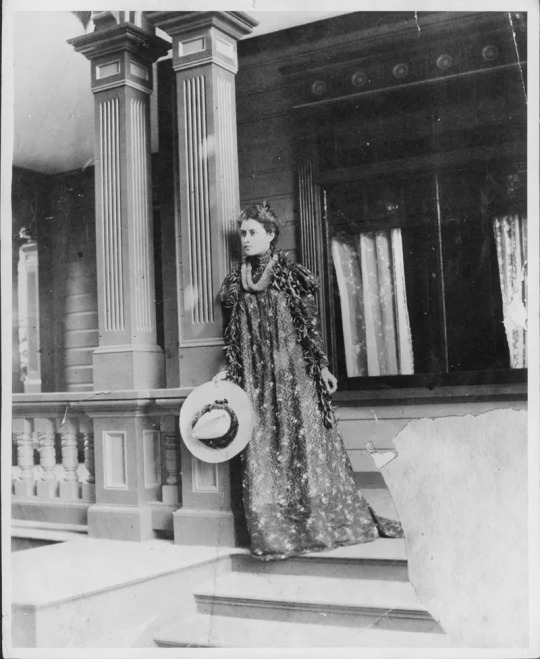

ʻĀinahau
Princess Victoria Kawekiu I Lunalilo Kalaninuiahilapalapa Kaʻiulani Cleghorn (commonly referred to as Princess Kaʻiulani) was born in Honolulu on October 16, 1875.
Princess Kaʻiulani’s mother was Princess Miriam Kapili Kekauluohi Likelike (sister of King Kalākaua and Queen Liliʻuokalani) and her father was Scottish businessman and horticulturist Archibald Scott Cleghorn, who later became Governor of Oʻahu.
Princess Kaʻiulani was the only child born to the Kalākaua dynasty; as such, she was the only direct heir to the throne of the Kingdom of Hawaiʻi.
Kaʻiulani inherited 10-acres of land in Waikīkī from her godmother, Princess Ruth Keʻelikōlani. Originally called Auaukai, Likelike named it ʻĀinahau; Princess Kaʻiulani spent most of her life there.
The stream that flowed through ʻĀinahau and emptied into the ocean between the Moana and Royal Hawaiian Hotels (where the present Outrigger Hotel is located,) was called ʻApuakehau (the middle of three rivers that used to run through Waikīkī.)
The family built a two-story home on the estate. At first the home was used only as a country estate, but Princess Kaʻiulani’s family loved it so much, it soon became their full-time residence.
The home was furnished with two grand pianos, elaborate brocade chairs, gold and glass cabinets and fixtures. Also, there were various art collections displayed on the walls and rooms.
The Scottish writer Robert Louis Stevenson was a frequent guest and used to read passages of poetry to the young Princess under the banyan tree. He even composed a poem for her where he described her as his “island rose, light of heart and bright of face.”
Archibald Cleghorn had an avid interest in horticulture. He imported plants and flowers from all over the world and planted them at ʻĀinahau.
Plants on the estate included mango trees, teak, cinnamon, camphor trees, date palms and sago palms. Its ten acres were filled with gardens, three lily ponds, 500 coconut trees, 14 varieties of hibiscus and 8 kinds of mango trees.
Reportedly, the first banyan tree in Hawaii was planted on the grounds of ʻĀinahau. As many as fifty peacocks, favorites of the young Princess, were allowed to roam freely on the grounds.
“The ʻĀinahau, with its waving, coconut trees, stately palms and winding roads and paths, has always been known as one of the most beautiful and romantic spots in Honolulu.” (Honolulu Star-Bulleting, September 23, 1913)
While attending a wedding at Parker Ranch at Waimea on the Big Island, Kaʻiulani got caught in a cold Waimea rain while riding on horseback, she became ill; she and her family returned to O‘ahu.
After a two-month illness, Kaʻiulani died at ʻĀinahau on March 6, 1899, at age 23. It is said that the night she died, her peacocks screamed so loud that people could hear them miles away and knew that she had died. Miriam Likelike passed away at ʻĀinahau 12-years before Kaʻiulani.
“Cleghorn, who survived both Princess Miriam Likelike and their daughter, died only a few years ago (Cleghorn lived until 1910 and also passed away there).” (Gessler, The Step Ladder, October 1921)
“Mr. Cleghorn … felt that he held ʻĀinahau in a sort of trust, to preserve it for the memory of Kaʻiulani, and indirectly also of Likelike.” (Honolulu Star Bulletin, April 16, 1913)
“A bill to accept the fine gift passed the senate in 1913 but was killed in the house, and it was admitted at the time that some of the heirs under the will had joined in fighting against the acceptance bill.” (Honolulu Star-Bulleting, September 23, 1913)
“The deal by which the property was leased was completed yesterday. The name of the lessee is withheld at this time, but it was learned that local persons are interested in the project.”
“On the first of July the buildings already on the estate will be opened as a hotel. The buildings include one large structure, five cottages and one grass house. … The lease is made for a short period of time, with the privilege of extension. It includes the entire area of beautiful ʻĀinahau.” (Honolulu Star-Bulletin, June 21, 1913)
Mrs EH Lewis rented the property from the Cleghorn estate and operated the property as ʻĀinahau Hotel from 1913 to 1917.
There was an unfortunate later fire of the home, while occupied by William F Aldrich. He ran to the room where the gas heater stood and saw flames. Neighbors tried to help by beating them out with cloths.
A fire truck was summoned from Kaimukī, but the pin holding together the steering gear fell out and the truck crashed into a fence. By the time help arrived, the building could not be saved. (Cultural Surveys)
“With great difficulty the flames were prevented from spreading to adjacent buildings. Sparks were carried to the roof of the Moana Hotel by the high wind.” (Maui News, August 5, 1921)
“Historic ʻĀinahau, at Waikiki, was totally destroyed by fire August 2d (1921,) together with most of its furniture and fittings, on which $15,000 insurance was carried.” (Thrum)
“ʻĀinahau, home of the wide lanais and lofty palms, rendezvous of Honolulu society in the reign of King Kalākaua, and haunt of Robert Louis Stevenson in his Hawaiian days, is gone. “
“The age old coconut trees which surrounded the famous palace were torches of remembrance, flaming high into the tropic night long after ʻĀinahau had become only a ghost among its glowing embers, but today they are charred stumps around blackened ruins.” (Gessler, The Step Ladder, October 1921)
In the late-1920s, the dredging of the Ala Wai Canal dried up the streams and ponds on the ʻĀinahau estate. Today the Princess Kaʻiulani Hotel sits at the former driveway entrance to the ʻĀinahau Estate, across the street from Waikiki’s historic Moana Hotel, which opened in 1901.
Source: http://imagesofoldhawaii.com/ainahau/
In 1999, a statue of Princess Kaʻiulani was erected in a small triangle park (at the corner of Kūhiō Avenue and Kaʻiulani Avenue,) which also includes a bus stop, halau mound for performances, landscaping and walkway.
#the royal diaries#history#history of hawaii#hawaiian history#ʻĀinahau#ainahau#Kaʻiulani#kaiulani#Kaiulani: The People's Princess
0 notes
Text
26 October - 13 November 2020
These past few weeks have been an emotional roller-coaster. Back in September several friends, within 48 hours of each other, informed me about an amazing opportunity in the south of France. I was so touched that people were looking out for me, knowing I’ve been aching to move to somewhere warmer, more Mediterranean. I hesitated for a week because the job announcement on a garden designer’s Facebook page stated French was important. I’ve studied French for a long time and I still have a long way to go to fluency. Again, later in the week, another friend from Kew mentioned it and knew the garden personally.
So I took the plunge and sent my CV, in French, to the garden designers. They liked it well enough to pass it to the client. A week later I had my first phone interview and it went well. Now I was super excited and could hardly sleep. On paper this job sounds really good. I checked out some You Tube videos on the garden designer, their preferred maintenance contractor and the nursery they use. I only became more interested and excited.
Plant ident 30 October
Lamiaceae Salvia africana-lutea syn. of Salvia aurea
Lamiaceae Salvia canariensis
Lamiaceae Salvia confertiflora
Lamiaceae Salvia elegans ‘Honey Melon’
Lamiaceae Salvia greggii x serpyllifolia
Lamiaceae Salvia greggii ‘Stormy Pink’
Lamiaceae Salvia involucrata
Lamiaceae Salvia microphylla var. neurepia ‘Oxford’
Lamiaceae Salvia ‘Nel’
Lamiaceae Salvia ‘Phyllis Fancy’
Plant of the week
Lamiaceae Salvia confertiflora Pohl
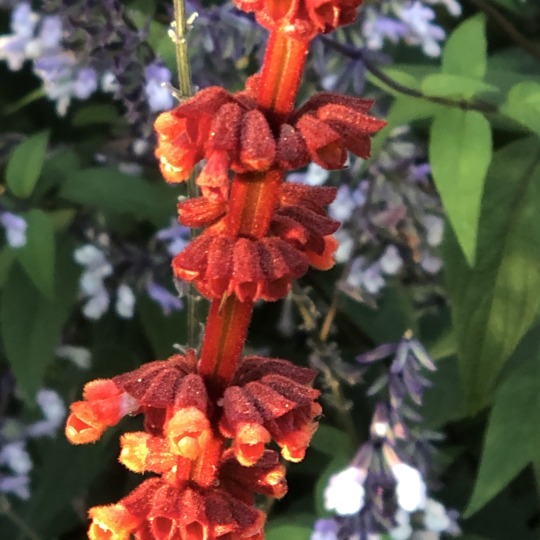
common name(s) - Sabra spike sage synonym(s) - Salvia confertiflora var. angustifolia J.A.Schmidt; Salvia confertiflora var. brachyantha Pohl; Salvia rufa Epling conservation rating - none native to - Brazil location - salvia walk, accession 2019-0398 leaves - deciduous, pungently-scented, ovate flowers - slender spikes of small scarlet flowers, covered with velvety red-brown hairs, with the stems of the inflorescence and the calyx also having a red-brown colour, in late summer and autumn habit - a tender bushy perennial to 1.2m tall, becoming woody at the base habitat - tropical, summer rains, dry winters pests - slugs, snails, capsid bug, rosemary beetle, leafhoppers disease - generally disease-free hardiness - to 1ºC (H2) soil - loam, chalk or sand, well-drained sun - full sun, sheltered propagation - seed in containers in a cold frame in spring; softwood cuttings in spring or early summer or semi-ripe cuttings in late summer or autumn with bottom heat pruning - cut down if hit by frost nomenclature - Lamiaceae - lamium - gullet, the name in Pliny refers to the gaping mouth of the corolla; Salvia - healer, the old Latin name for sage with medicinal properties; confertiflora - with dense or crowded flowers NB - first discovered in 1833 by the Austrian naturalist, Johann Baptist Emanuel Pohl in the Serra dos Órgãos, state of Rio de Janeiro. Pohl sent specimens back to botanical gardens of Europe where it was popular not only for its dramatic colour, but also for its prolific flowering well up to the time of frost
References, bibliography:
Gledhill, David, (2008) “The Names of Plants”, fourth edition; Cambridge University Press; ISBN: 978-0-52168-553-5
IUCN [online] http://www.iucnredlist.org/search [18 Nov 20]
Plant List, The [online] http://www.theplantlist.org/tpl1.1/record/kew-182420 [18 Nov 20]
Plants of the World [online] http://plantsoftheworldonline.org/taxon/urn:lsid:ipni.org:names:456011-1 [18 Nov 20]
Royal Horticultural Society [online] https://www.rhs.org.uk/Plants/16324/i-Salvia-confertiflora-i/Details [18 Nov 20]
Wikipedia [online] https://en.wikipedia.org/wiki/Salvia_confertiflora [18 Nov 20]
About ten days later I received an email inviting me to meet with his wife, here in London, for a second interview. That took place one evening after work. Again, the conversation went very well and it turns out we have a friend in common - who would have imagined!
The following week, after posting some tea to my sister in LA, I received the call offering me the position. Again, no sleep that night!
While all of this was happening, my tinnitus has been acting up too. I have also experienced a few bouts of vertigo, which is quite rare for me.
So that Friday, two weeks ago, I tendered my resignation. I asked to take my remaining annual leave as part of my notice period which meant I only had two weeks left in the garden. This will give me next week to sort my packing and I’ll fly to Nice next Saturday, 21 November. This will give me one week to work with the person who is leaving. I’ve never had such a fantastic opportunity for a week-long hand-over.
Plant ident 6 November this week was a review of the past four weeks, those were my favourites at Kew because it helped me retain names that would otherwise have just never stuck.
Plant of the week
Cucurbitaceae Momordica charantia L.

common name(s) - bitter melon; bitter apple; bitter gourd; bitter squash; balsam-pear synonym(s) - Cucumis argyi H.Lév.; Cucumis intermedius M.Roem.; Momordica charantia subsp. abbreviata (Ser.) Greb.; Momordica charantia f. abbreviata (Ser.) W.J.de Wilde & Duyfjes; Momordica charantia var. abbreviata Ser.; Momordica charantia var. longirostrata Cogn.; Momordica charantia var. muricata (Willd.) Chakrav.; Momordica chinensis Spreng.; Momordica elegans Salisb.; Momordica indica L.; Momordica muricata Willd.; Momordica sinensis Spreng.; Momordica thollonii Cogn.; Sicyos fauriei H. Lév. conservation rating - none native to - tropical and subtropical Old World location - tropical corridor, accession 2020-0110 leaves - simple, alternate leaves 40 to 120mm across, with three to seven deeply separated lobes flowers - separate yellow male and female flowers; in the Northern Hemisphere, flowering occurs during June to July and fruiting during September to November habit - very vigorous, tendril-bearing vine to 5m habitat - hot humid areas of the tropics and subtropics; savannah and bush; common in coastal thickets, along creeks and streams, and in lowland forest margins pests - aphids disease - downy mildew, powdery mildew, Fusarium wilt, target leaf spot, root-knot hardiness - to 5ºC (H1c) soil - rich in organic matter with 2m to 2.5m of rainfall annually sun - full sun propagation - seed - sow in situ; seedlings emerge five to seven days after sowing, but fresh seed often shows dormancy which is very hard to break and can last for some months pruning - none nomenclature - Cucurbitaceae - cucurbita - Latin name for the bottle-gourd; Momordica - bitten, the jagged seeds of balsam pear appear to have been nibbled; charantia - graceful, the pendent fruits NB - is a laxative, diuretic herb that soothes irritated tissue, lowers fevers, kills parasites and cleanses toxins from the system; probably also a uterine stimulant; the fruit is most often eaten green, or as it is beginning to turn yellow. At this stage, the fruit's flesh is crunchy and watery in texture, similar to cucumber, chayote or green bell pepper, but bitter. The skin is tender and edible.
References, bibliography:
Gledhill, David, (2008) “The Names of Plants”, fourth edition; Cambridge University Press; ISBN: 978-0-52168-553-5
IUCN [online] http://www.iucnredlist.org/search [20 Nov 20]
Plant List, The [online] http://www.theplantlist.org/tpl1.1/record/kew-2372864 [20 Nov 20]
Plants of the World [online] http://plantsoftheworldonline.org/taxon/urn:lsid:ipni.org:names:293413-1 [20 Nov 20]
Useful Tropical Plants [online] http://tropical.theferns.info/viewtropical.php?id=Momordica+charantia [20 Nov 20]
Wikipedia [online] https://en.wikipedia.org/wiki/Momordica_charantia [20 Nov 20]
I worked the weekend of 7/8 November, my last weekend duty.
I’ve been taking private French lessons twice a week for the past three weeks. François has been taking an hour out every weekend to help me with my French. I’m hoping once I start living in the language it will come together. Lucien organised my French mobile number, so it will be ready to use when I land.
During these few weeks in the garden leaves have been falling and falling and falling. Al spends most mornings blowing leaves into big piles. He’s also agreed to stay on through the end of January.
Plant ident 13 November ferns
Aspleniaceae Asplenium trichomanes
Aspleniaceae Asplenium scolopendrium
Blechnaceae Blechnum cordatum
Dennstaedtiaceae Pteridium aquilinum
Dicksoniaceae Balantium antarcticum syn. Dicksonia antarctica
Dryopteridaceae Polystichum setiferum
Polypodiaceae Adiantum venustum
Polypodiaceae Microsorum diversifolium syn. Phymatosorus pustulatus subsp. pustulatus
Polypodiaceae Polypodium interjectum
Pteridaceae Coniogramme emeiensis
I gave Olivia a thorough hand-over of my beloved tropical glasshouse. I’m sure it is in good hands, and under the always watchful eye of Jess.
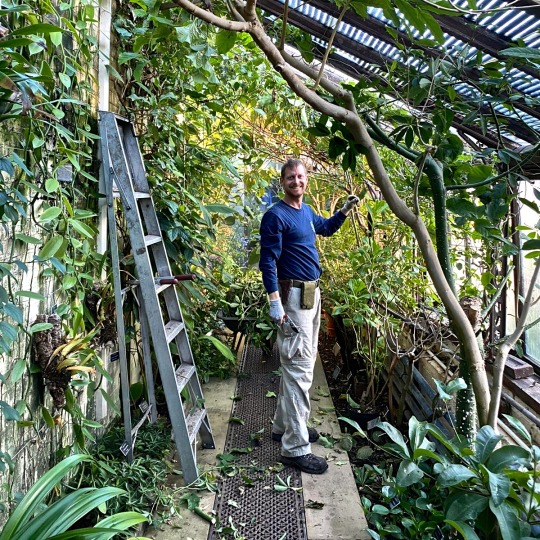
Jess and I gave the tropical corridor it’s winter pruning on Thursday.
Nell has allowed me to work on several projects on the database I’ve been trying to complete. I added to my predecessor’s manual for the plant records manager. It is quite comprehensive. I hope my replacement finds it helpful and continues to update it as the roll changes.
Wednesday, when Jill was in the garden, I asked her to create a herbarium specimen of the Romneya coulteri for me, also being a California native.
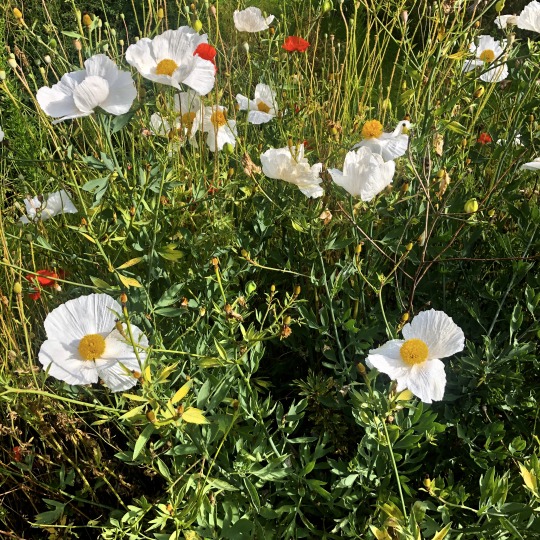
Friday, 13 November, saying goodbye... I made my way to Victoria in the morning, before work, to purchase one last social from Ole & Steen. After work we indulged in cheese, beers and Nell gave a very nice speech.
Mary Ellen painted this for me, and the plant and secateurs were gifts from colleagues.
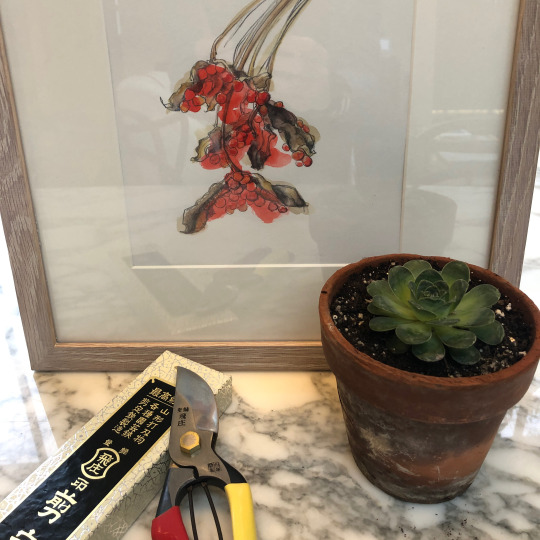
The evening concluded with a stint in the jacuzzi - so very relaxing.

Plant of the week - a foreshadow of the next garden in which I shall be working
Cistaceae Cistus creticus L.
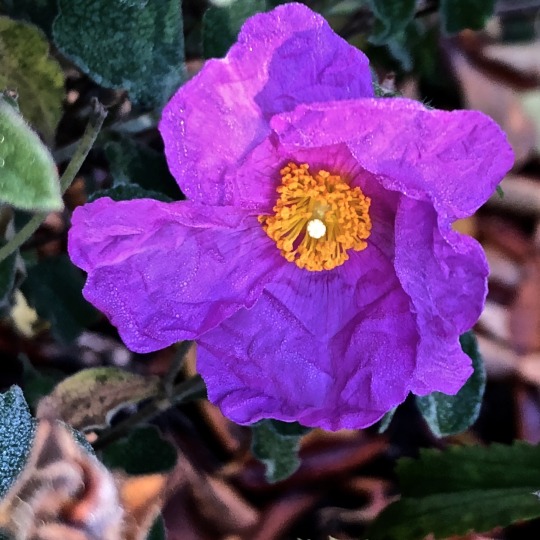
common name(s) - Cretan rockrose synonym(s) - Cistus complicatus Spruner ex Nyman; C. creticus f. albus (O.E.Warb.) Demoly; C. creticus f. flavus Demoly; C. creticus subsp. trabutii (Maire) Dobignard; C. cupanianus C.Presl; C. dunalianus Sweet; C. garganicus Ten.; C. × incanus subsp. creticus (L.) Heywood; C. incanus subsp. creticus (L.) Heyw.; C. ladaniferus Stokes; C. polymorphus Willk.; C. rotundifolius Sweet; C. tomentosus Lam. [Illegitimate]; C. undulatus Moench; C. villosus L.; C. villosus f. albus O.E.Warb.; C. villosus var. creticus (L.) Boiss.; C. villosus var. rotundifolius (Sweet) Grosser; C. villosus var. trabutii Maire; C. villosus var. undulatus Grosser; C. vulgaris Spach; Ladanium officinarum Spach; Ladanum verum Raf. infraspecific taxa - Cistus creticus subsp. corsicus (Loisel.) Greuter & Burdet; Cistus creticus subsp. eriocephalus (Viv.) Greuter & Burdet conservation rating - none native to - central and eastern European Mediterranean to Jordan location - history beds, accession 1996-0376 leaves - shaggily hairy stems, leaves are slightly scented flowers - variable in shade from deep purple-pink to rose pink, to 6cm across, with a yellow centre habit - very variable, small, bushy, evergreen shrub, to perhaps 1.5m tall; highly branched shrub that measures between 30 to 140 cm with a more or less creeping stem but without actually taking root in the ground, with little strength to stay upright habitat - distributed in calcareous romerales that inhabit soils with sandy characteristics; can be found growing near oak forests on the coast pests - generally pest-free disease - may suffer from nutrient deficiency when grown on very alkaline soils hardiness - to -10ºC (H4) soil -well-drained sun - full sun, sheltered propagation - seed, sow as soon as ripe and keep in cold frame or sow in spring; softwood cuttings in summer pruning - does not respond well to hard renovation pruning nomenclature - Cistaceae - Cistus - capsule, rock roses are conspicuous in fruit; creticus - from Crete, Cretan NB - traditional herbal medicine, the leaves of Cistus have been used in the treatment of skin and inflammatory diseases (Hudson, 2009). Recent scientific research has confirmed the validity of this traditional herbal knowledge through studies that have demonstrated that Cistus leaf extractives have powerful antibacterial, antifungal, antiviral, and biofilm-breaking qualities (Rebensburg et al, 2015).
References, bibliography:
Gledhill, David, (2008) “The Names of Plants”, fourth edition; Cambridge University Press; ISBN: 978-0-52168-553-5
IUCN [online] http://www.iucnredlist.org/search [19 Nov 20]
Plant List, The [online] http://www.theplantlist.org/tpl1.1/record/kew-2723343 [19 Nov 20]
Plants of the World [online] http://plantsoftheworldonline.org/taxon/urn:lsid:ipni.org:names:168230-1 [19 Nov 20]
ProHealth [online] https://www.prohealth.com/library/cistus-a-natural-antibiotic-antiviral-and-biofilm-buster-6292 [19 Nov 20]
Royal Horticultural Society [online] https://www.rhs.org.uk/Plants/22292/Cistus-creticus/Details [19 Nov 20]
Warbleton Council [online] https://warbletoncouncil.org/cistus-creticus-13547 [19 Nov 20]
SARS-CoVid-2 update (active cases only) 2 November 2020

SARS-CoVid-2 update (active cases only) 8 November 2020

SARS-CoVid-2 update (active cases only) 16 November 2020

0 notes
Text





Plectranthus ciliatus, called Indian borage, speckled spur flower, blue spur flower (a name shared with other members of its genus), and candlestick plant (shared with many other species), is a species of flowering plant in the family Lamiaceae (Ясно́тковые или Губоцве́тные, Глухокропивові среди которых такие широко используемые растения, как лаванда, базилик, мята, розмарин, чабер, шалфей, майоран, мелисса, тимьян и душица). It is native to South Africa and Eswatini, and introduced to Victoria in Australia and the North and South Islands of New Zealand. With its Coleus‑like foliage, its cultivar 'Easy Gold' has gained the Royal Horticultural Society's Award of Garden Merit as an ornamental.
109-123 Irishtown Road, Thames 3500 VG8W+RH3 Thames
-37.1329940, 175.5464310
0 notes